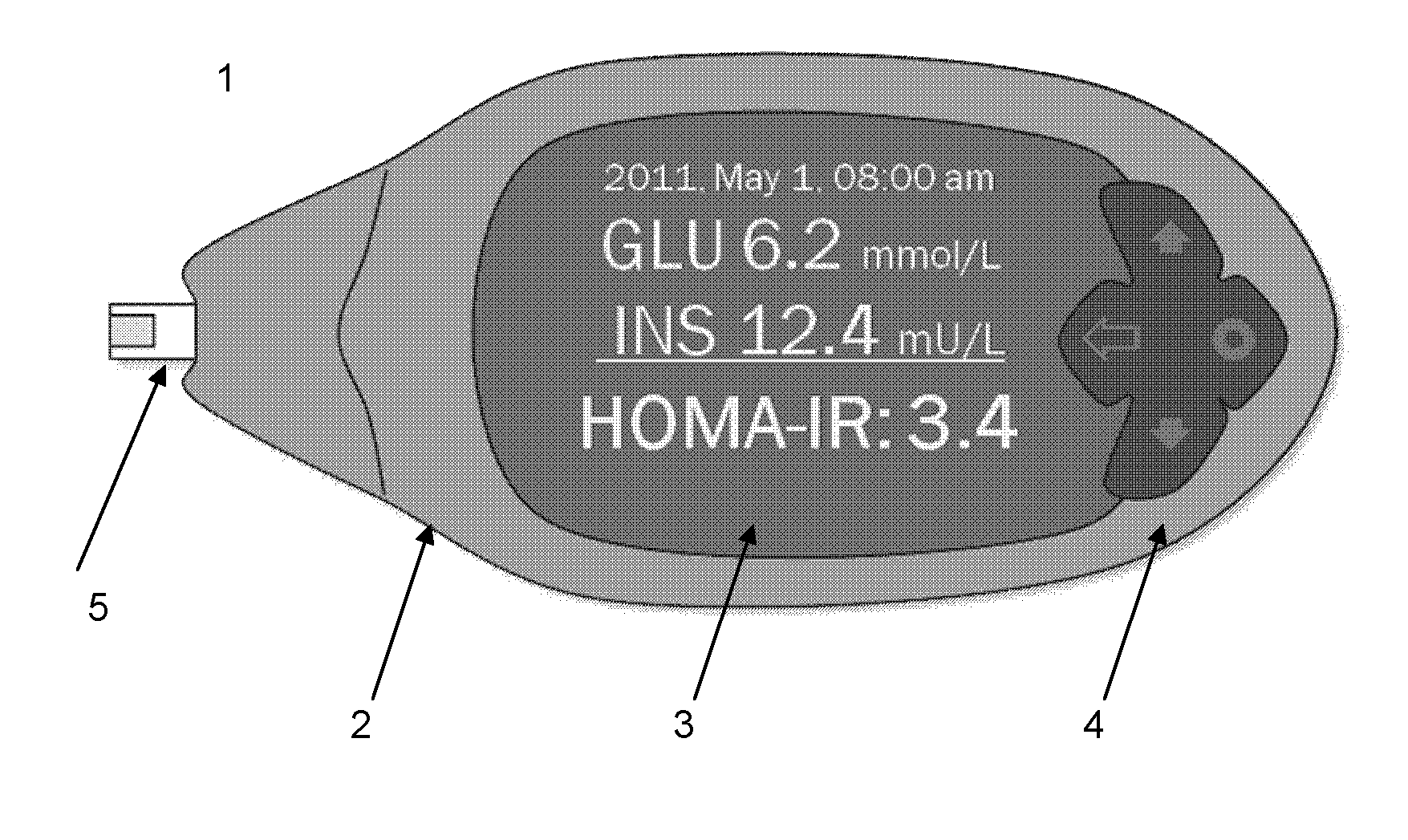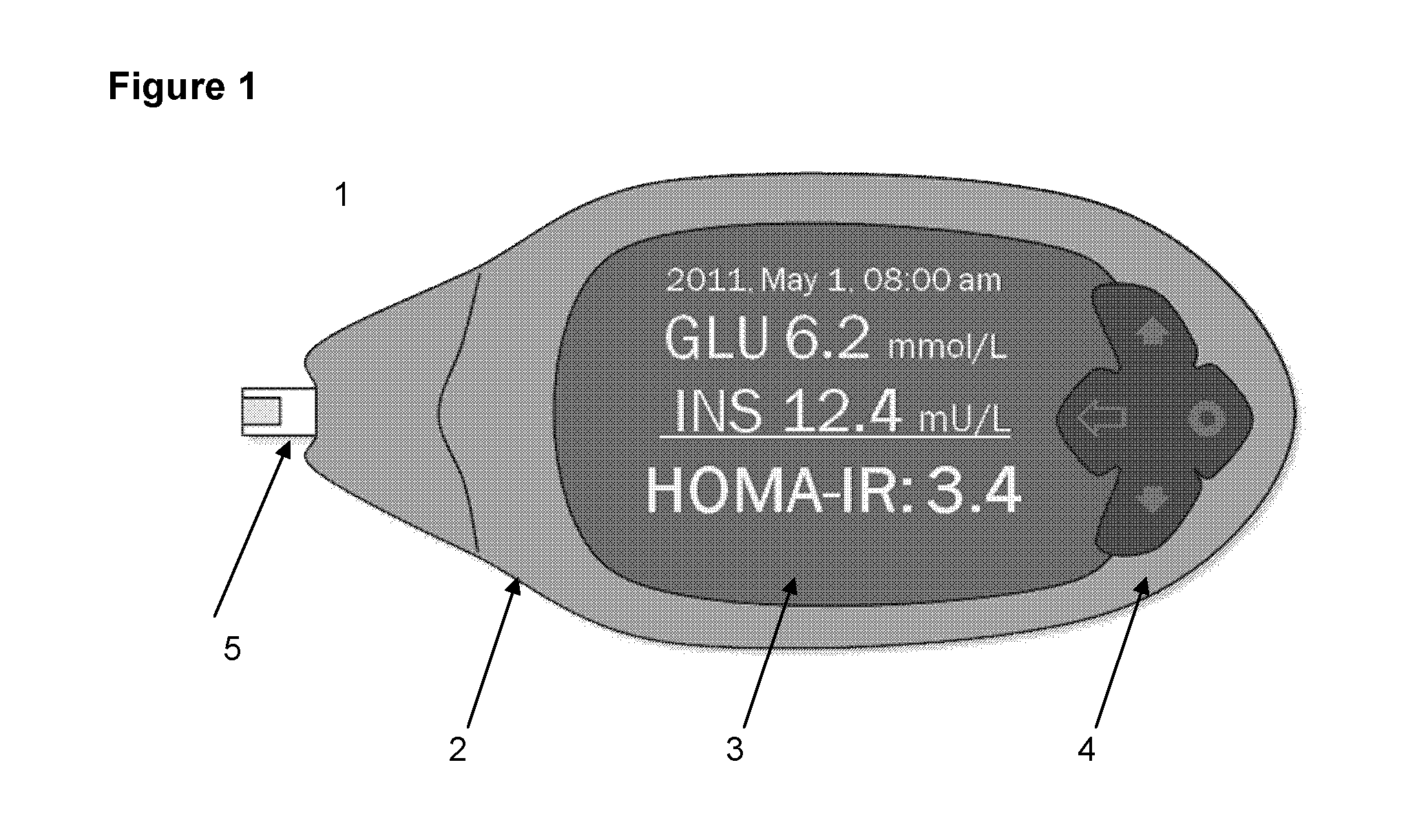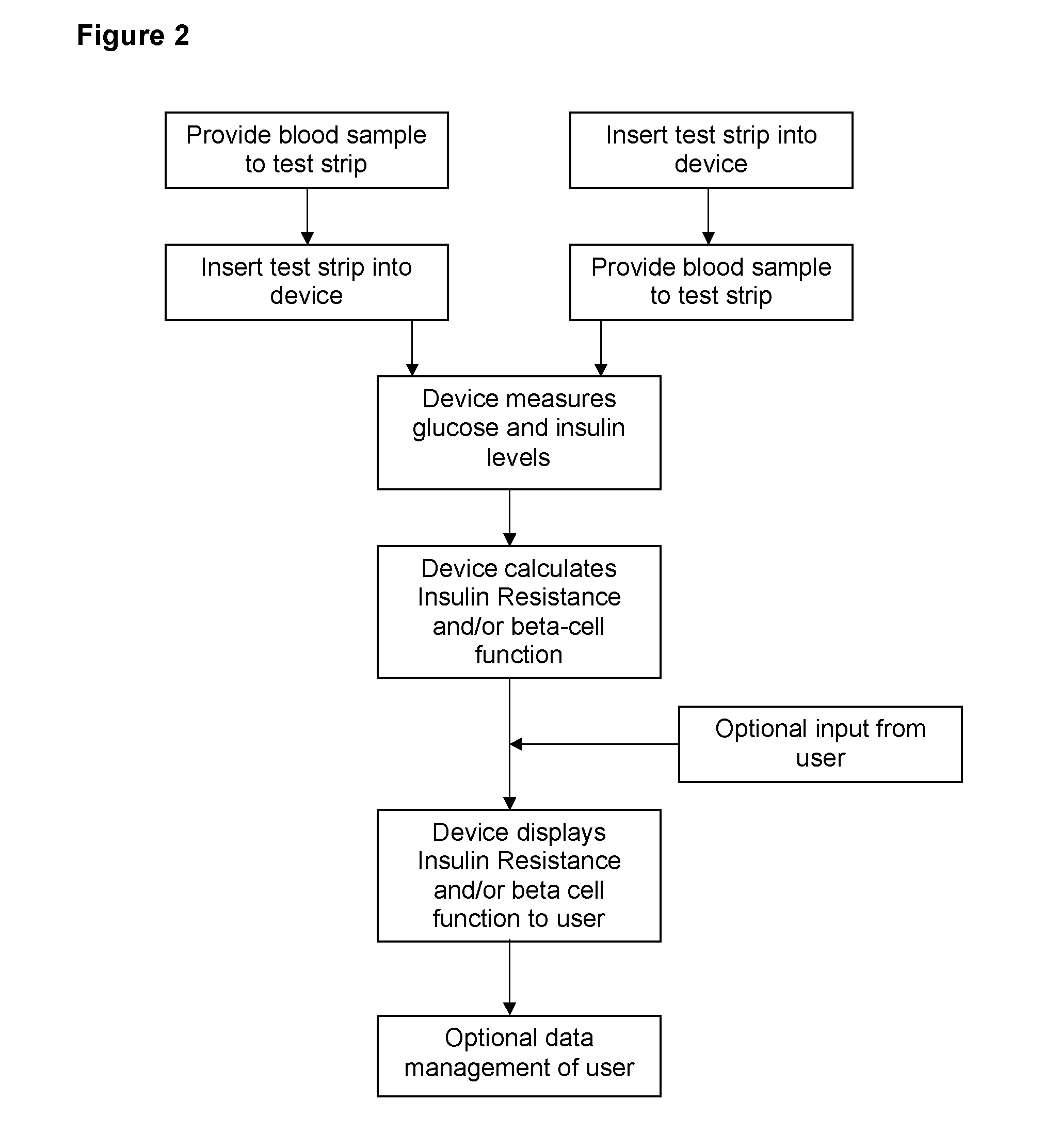Assay and method for determining insulin-resistance
a technology of insulin resistance and assay, applied in the field of medical diagnostics, can solve the problems of inaccurate assumptions, non-healthy or dangerous glucose levels, and inability to know when and where insulin sensitivity is needed, and achieve the effect of better serving the actual basal insulin need and better dosing the insulin administration
- Summary
- Abstract
- Description
- Claims
- Application Information
AI Technical Summary
Benefits of technology
Problems solved by technology
Method used
Image
Examples
example 1
Examples of Electrochemical Blood Glucose and Insulin Detection Test Strips
Blood-Glucose Detection Strip:
[0196]Screen printed working and reference electrodes are prepared on a disposable test strip which can receive a drop of blood. To the working electrode, an amount of glucose-oxidase is attached, in combination with an amount of electron-transfer mediator. The glucose in the blood sample brought onto the test strip is oxidized by the glucose-oxidase present on the working electrode, thereby releasing a proportional amount of electrons, transferred by the mediator to the reference electrode. The current measured between both electrodes is proportional to the amount of glucose in the blood sample.
Blood-Insulin Detection Strip:
[0197]In this example, insulin detection based on an electrochemical immunoassay detection system is described, wherein an insulin-specific antibody is labeled with a charged molecule or particle. Said antibody is present in the reaction zone of the test devi...
example 2
Examples of Optical Blood Glucose and Insulin Detection Test Strips
Colorimetric Blood Glucose Test
[0202]As an example, the test strip uses a colorimetric reaction following the formation of hydrogen peroxide by the glucose oxidase enzyme oxidizing glucose present in the blood. The test strip further encompasses a benzidine derivative, which is oxidized to form a blue-colour polymer by the hydrogen peroxide formed in the oxidation reaction. The amount of colored complex formed on the test strip is measured by trans-illuminating the test strip and detecting the amount of light transferred through the strip. The less light detected, the more complex formed and the higher the glucose concentration in the blood sample.
Colorimetric Blood Insulin Test:
[0203]In this example, the detection of insulin in the blood sample is based on pure immunological techniques, employing ELISA technology on a micro-scale in the reaction zone of the device, i.e. the microporous test strip, providing the need...
example 3
Use of Insulin Resistance in Adjusting the Basal Insulin Requirement
In Patients with a Single Basal Insulin Injection
[0225]The basal requirement of insulin is filled in with a once a day injection of long (>24 hours) acting insulin. This dose is driven, among other things, by the insulin resistance of the patient. The amount basal insulin can be adapted to the real time insulin resistance by using the measured HOMA-IR as a correction factor. The new rate becomes then:
[0226]Basal rate as established times HOMAR-IR real time / HOMA-IR established=real time insulin resistance adapted basal rate.
In Patients with an Insulin Pump:
[0227]The basal rate of a patient varies from work day to weekend day, days with exercise versus days without exercise, sick days, certain days during the menstrual cycle etc. The insulin resistance changes throughout the day. A clear example is the basal rate profile that insulin pump patients use that varies from hour to hour. They program different rates of a co...
PUM
| Property | Measurement | Unit |
|---|---|---|
| Molar density | aaaaa | aaaaa |
| Molar density | aaaaa | aaaaa |
| Molar density | aaaaa | aaaaa |
Abstract
Description
Claims
Application Information
 Login to View More
Login to View More - R&D
- Intellectual Property
- Life Sciences
- Materials
- Tech Scout
- Unparalleled Data Quality
- Higher Quality Content
- 60% Fewer Hallucinations
Browse by: Latest US Patents, China's latest patents, Technical Efficacy Thesaurus, Application Domain, Technology Topic, Popular Technical Reports.
© 2025 PatSnap. All rights reserved.Legal|Privacy policy|Modern Slavery Act Transparency Statement|Sitemap|About US| Contact US: help@patsnap.com



